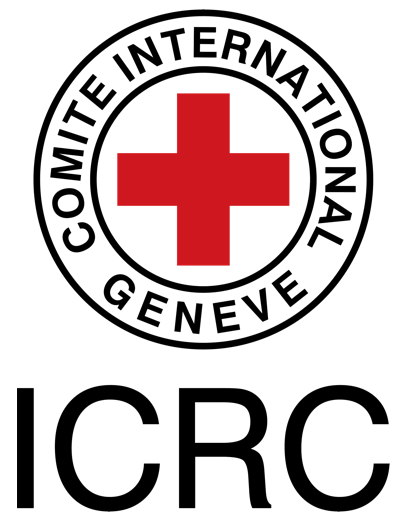Category:Sports Medicine
Sport and Exercise Physiotherapy is now recognised as a specialist area with growing numbers of physiotherapists seeking to work in this diverse and exciting field. People are increasingly encouraged to undertake sport and exercise as part of a healthier lifestyle. Although this has a number of global health benefits, a related caveat is an increased risk of injury. Currently, sporting injuries commonly present to the health professional; these injuries present a unique challenge in terms of their aetiology, management and potential for recurrence. This category contains pages that relate to Sports and Exercise Medicine.
Subcategories
This category has the following 12 subcategories, out of 12 total.
A
B
- Biomechanics (77 P)
- Bursitis (6 P)
J
M
- Muscle strain (13 P)
S
- Sports (Lower Limb) (15 P)
T
- Tendinopathy (53 P)
- Tendons (31 P)
Y
- Younger Athlete (16 P)
Pages in category "Sports Medicine"
The following 200 pages are in this category, out of 527 total.
(previous page) (next page)I
- Infraspinatus Test
- Injury and Healing Within Sports Physiotherapy
- Injury Prevention in Sport
- Injury Type and Classification in Sport
- Insights into Rehabilitation in Sport
- Insulin Like Growth Factor-1 (IGF-1)
- Internal Impingement of the Shoulder
- Internal Rotation Lag Sign
- Intersection Syndrome
- Introduction to Sport for People with Disabilities
- Introduction to Sports Nutrition
- Ischial Bursitis
K
L
- Labral Tear
- Lactate Threshold
- Lag Sign of the Shoulder
- Lateral Collateral Ligament Injury of the Knee
- Lateral Epicondyle Tendinopathy (Tennis Elbow) Toolkit
- Lateral Epicondyle Tendinopathy Toolkit: Appendix A - Details of the Articles
- Lateral Epicondyle Tendinopathy Toolkit: Appendix G - Medical and Surgical Interventions
- Lateral Epicondyle Tendinopathy Toolkit: Section C - Outcome Measures
- Lateral Epicondyle Tendinopathy Toolkit: Section D - Summary of the Evidence
- Lateral Epicondyle Tendinopathy Toolkit: Section E - Exercise Prescription
- Lateral Epicondyle Tendinopathy Toolkit: Section F - Manual Therapy
- Lateral Epicondyle Tendinopathy Toolkit: Section G - LASER Dosage Calculation
- Lateral Epicondyle Tendinopathy Toolkit: Section H - Braces, Splints, and Taping
- Lateral Epicondyle Tendinopathy Toolkit: Treatment Algorithm
- Lateral Epicondylitis
- Lateral Ligament Injury of the Ankle
- Lateral Step Down Test
- Leg and Foot Stress Fractures
- Leg Length Discrepancy
- Legg-Calve-Perthes Disease
- Lever Sign Test
- Ligament Sprain
- Lipids
- Lisfranc Injuries
- Load and Shift
- Load Management
- Long Term Trends in Physical Activity
- Low Back Pain
- Low Back Pain and Young Athletes
- Lower Crossed Syndrome
- Lumbar Assessment
- Lumbar Discogenic Pain
- Lumbar Facet Syndrome
- Lumbar Spine Fracture
- Lumbar Strain
M
- Mallet Finger
- Matles Test
- Maudsley's test
- Maximal Squat Test
- McCarthy test
- McMurrays Test
- Mechanical Neck Pain
- Medial Collateral Ligament Injury of the Knee
- Medial Tibial Stress Syndrome
- Medical Related Issues in Sports Medicine
- Meniscal Lesions
- Mental Health and the Young Athlete
- Mental Health Considerations for Athletes
- Mental Health of Elite Athletes
- Mental Imagery in Sports
- Metatarsal Fractures
- Mill’s Test
- Models of Fatigue
- Morel-Lavallée lesion
- Motivation and Resilience for Athletes
- Moving Patellar Apprehension Test
- Moving Valgus Stress Test
- Muller's Test
- Mulligan Taping
- Multiligament Injured Knee Dislocation
- Muscle
- Muscle Cells (Myocyte)
- Muscle Fatigue
- Muscle Fibre Types
- Muscle Injuries
- Muscle Injuries: Regeneration Strategies
- Muscle Protein Synthesis
- Muscle Proteins
- Muscle Spindles
- Muscle Strength of the Ankle
- Muscle Strength Testing
- Musculoskeletal Injury Prevention
- Musculoskeletal Injury Risk Screening
- Myoglobin
- Myositis Ossificans of the Quadriceps
N
O
P
- Paediatric ACL Injuries
- Painful Arc
- Paralympic Sport Classification
- Paralympic Summer Sports
- Paralympic Winter Sports
- Paraspinal Muscles
- Passive compression test
- Patellar dislocation
- Patellar Grind Test
- Patellar malalignment
- Patellar Taping
- Patellar Tendinopathy
- Patellar tendon tear
- Patellofemoral Pain Syndrome
- Patellofemoral Pain Syndrome and Hip Strength
- Paxino's test
- PCL Reconstruction
- Peace and Love Principle
- Pectoralis Major Rupture
- Peroneal Tendinopathy
- Peroneal Tendon Subluxation
- Peroneus Longus and Brevis Tests
- Pes Anserinus Bursitis
- Phalen’s Test
- Physical Activity
- Physical Activity and Exercise Prescription
- Physical Activity and Injury Prevention in Adolescents
- Physical Activity, Sport and Recreation for Young People with Physical Disabilities
- Physical Inactivity
- Physiology In Sport
- Piriformis Syndrome
- Piriformis Test
- Pivot Shift
- Plantar Fasciitis
- Plantar Heel Pain
- Plica Syndrome
- Plyometrics
- POLICE Principle
- Popliteus strain
- Popliteus Tendinopathy
- Post-Concussion Syndrome
- Posterior Cruciate Ligament Injury
- Posterior Drawer Test (Knee)
- Posterior Interosseous Nerve Syndrome
- Posterior Knee Pain
- Posterior Pelvic Pain Provocation Test
- Posterior Shoulder Instability
- Posterior Tibial Tendon Dysfunction
- Pott's fracture
- Practical Guide to Hip and Knee Strengthening
- Pre-participation Screening
- Pre-Season Evaluation in Sport
- Prehabilitation in Sport
- Prepatellar Bursitis
- Principles of Exercise
- Principles of Exercise Physiology and Adaptation
- Principles of Exercise Rehabilitation
- Principles of Load Management in Sport and Exercise Rehabilitation
- Pronator Teres Syndrome Test
- Prone Instability Test
- Proprioception
- Protective Sports Equipments
- Proximal Hamstring Tendinopathy
- Pubalgia
R
- Recreational and Performance Enhancing Drugs in Sport
- Rehabilitation in Sport
- Rehabilitation of Running Biomechanics
- Renne test
- Rent Test
- Resisted Abduction Test
- Resisted AC Joint Extension Test
- Retrocalcaneal Bursitis
- Return to Play During a Pandemic
- Return to Play in Sports
- Return to Sport
- Rib stress fracture in rowers
- RICE
- Risk Factors and Injury Mechanisms in Sports Injuries
- Risk Management in Sport






